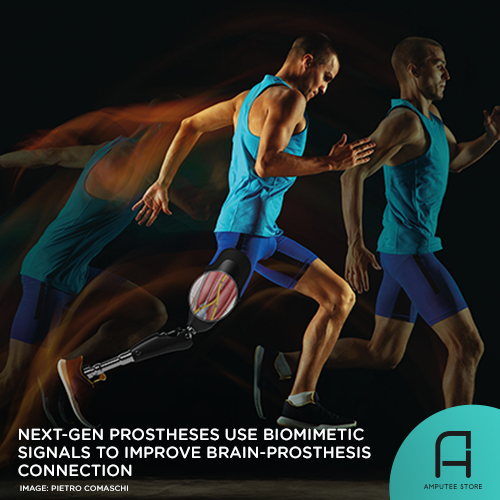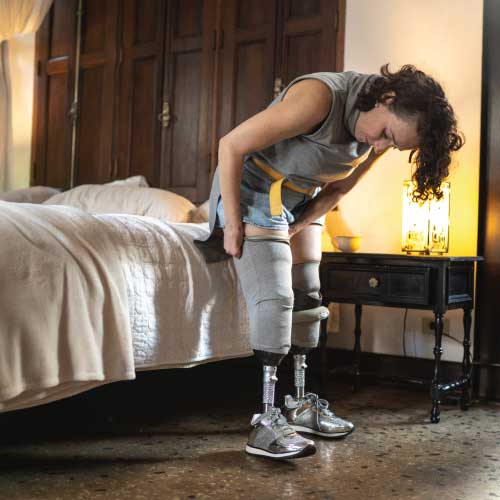Next Gen Prostheses Use Biomimetic Signals to Improve Brain-Prosthesis Connection
Researchers are making promising progress in designing new prosthetic legs that work more like biological human legs. These advanced prostheses will use biomimetic signals to help people with lower-limb loss walk better and even do things like climb steps quickly and focus on other tasks while walking.

Biomimetic signals are messages that prosthetic legs receive from the body or the environment. These messages tell the prosthetic leg what to do, like biological legs. For example, when we walk, our legs receive signals from our brains that tell us how to move. The idea is to make prosthetic legs do the same thing.
A team of scientists, led by Professor Stanisa Raspopovic at ETH Zurich in Switzerland, is working on using biomimetic signals to operate prosthetic legs. In an initial experiment, a test subject was fitted with a prosthetic device that was connected to the sciatic nerve in their thigh through implanted electrodes.
However, this setup doesn’t allow for natural communication between the prosthetic limb and the brain. It created electric pulses that evoked unpleasant sensations, like tingling over the skin. This sensation is called ‘paraesthesia,’ which could be caused by overstimulation of the nervous system.
The researchers tried to improve this by making the prosthetic leg send signals that the brain could understand better.
To do this, they developed a computer model called FootSim. This model simulates how the nerves in the foot send signals to the brain when we walk or run. It’s based on data collected from volunteers in Canada who had their feet touched with a vibrating rod.
The researchers also conducted experiments on cats, whose nervous systems process movement in a manner akin to humans. In these experiments, the researchers sought to determine if the signals from the prosthetic limbs were comparable to authentic signals in the nervous system. These experiments were conducted in compliance with European Union guidelines, and the results were encouraging.
In tests with people with lower limb loss, they found that using these biomimetic signals helped the subjects climb stairs faster and make fewer mistakes. The subjects could also focus on other things while walking with the biomimetic prosthetic limb.
The researchers believe this technology could also be used for other devices, like spinal implants or electrodes for brain stimulation. By better understanding how the nervous system works, this technology has great potential to improve the lives of people with disabilities.











































































